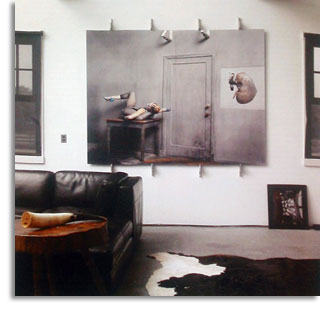12 Elaborate Sets for Madonna’s Confessions

Today’s edition of the New York Times features a story about fashion photographer Steven Klein‘s recent projects that includes the following interesting excerpt about his works with Madonna.
“These days Klein works at a studio in the meatpacking district as well as a 15-acre farm in Bridgehampton, N.Y., where he said he likes to spend weekends. Three Great Danes roam about freely at home and work. “They are my angels,” he said. “I remember them and honor them.” (The name of one of his dogs, Brando, is tattooed on his forearm; that of Axel, a puppy who died, is tattooed on his chest above his heart.)
The foray into video began after Mr. Klein met Madonna in 2002 and agreed to photograph her for W . Those images became the genesis of X-STaTIC PRO=CeSS , an installation of combined images of video and still photography at Deitch Projects in SoHo in 2003.
Mr. Klein said he wanted to portray the singer not as a pop icon but as a performance artist. “I presented her with objects and ideas that had been important in her career: the wedding dress, the strip pole, the yogi, the queen, the bed,” he said. He photographed Madonna on large elaborate sets while videotaping her for the Re-Invention tour videos. For the Deitch show, he said, “I worked in a way where I introduced one element at a time.”
In one image, he used a still photograph of the singer lying on a small wooden table just to the left of a door, her left leg curled underneath her shoulder and around the back of her neck. To the right of the door was a poster of a kidney; Mr. Klein used computer animation to make the kidney pulsate. Then he overlaid the sound of gunshots. Black scuff marks on the door suggest violence.
“People are fixed either on still images or live action,” he said. “I was interested in the space between the two,” he said.
This month Mr. Klein photographed and videotaped Madonna on 12 elaborate sets for the cover of her next album, “Confessions on a Dance Floor .” But as much as the photographer appreciates an iconic face, he likes to play with what the notion of who the subject is and isn’t.
Read the full article by Laura M. Holson on today’s New York Times
